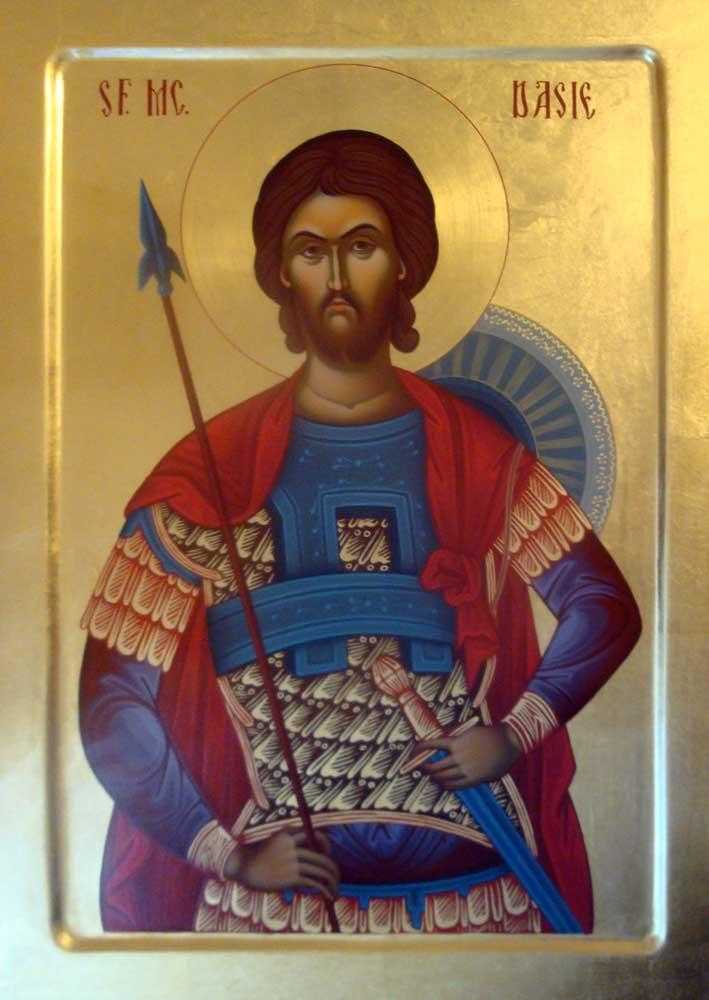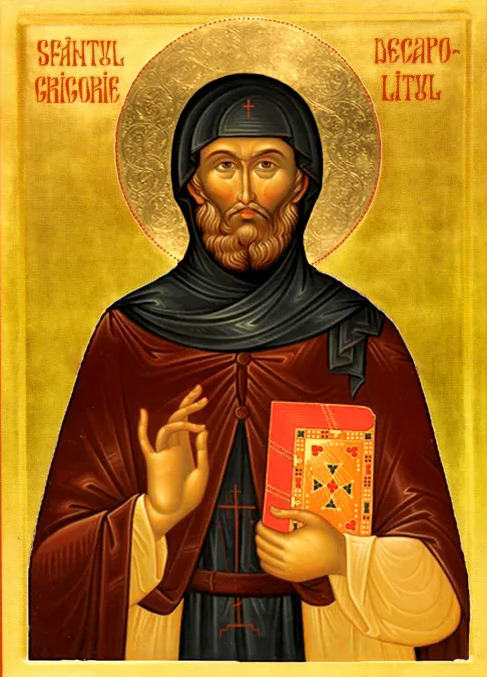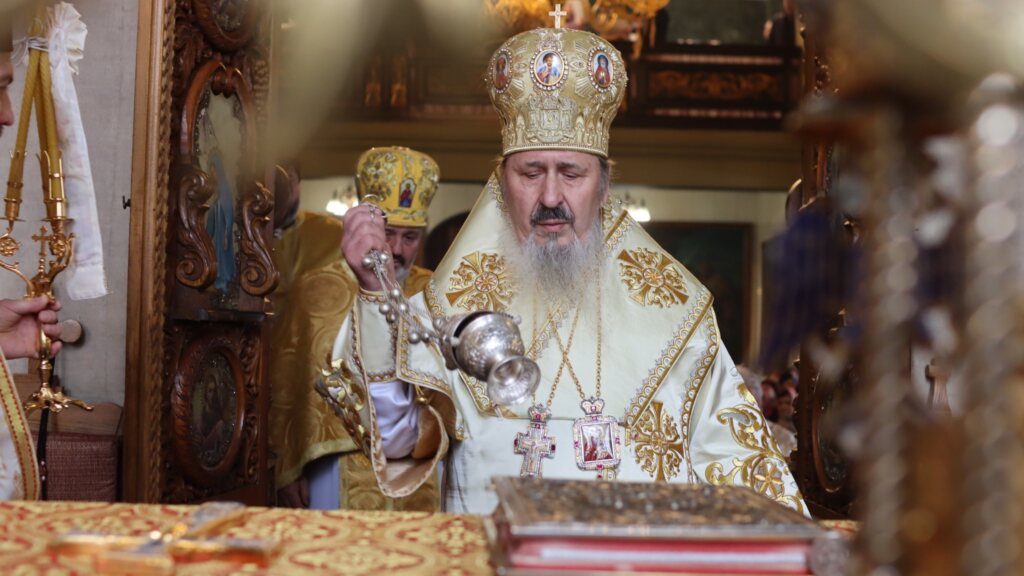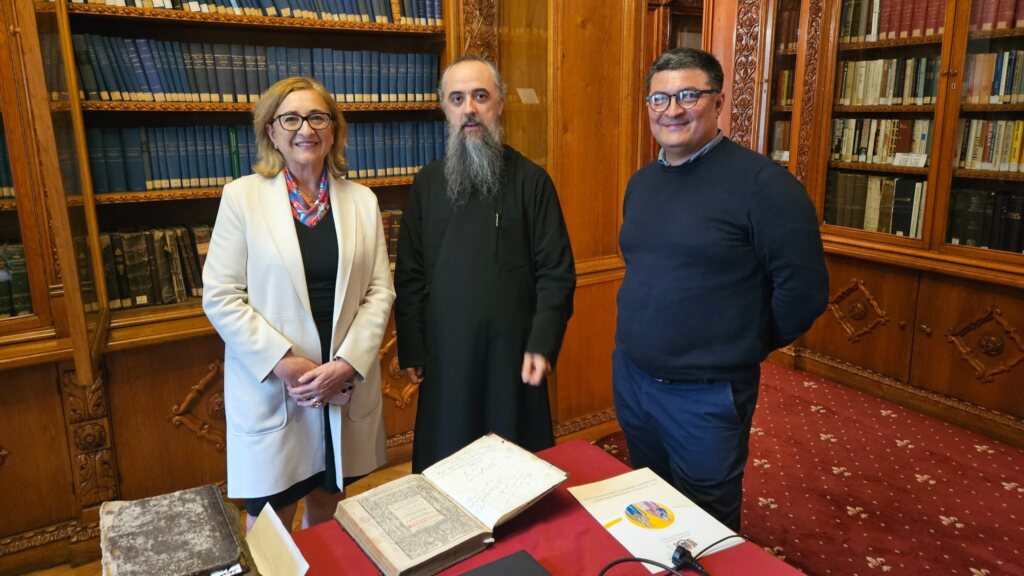The three Old Testament readings at Great Vespers refer to the Temple. The first lesson (Exodus 40:1-5, 9-10, 16, 34-35) refers to the arrangement of the tabernacle of the tent of the congregation (a portable sanctuary which was carried by the Israelites in their wanderings).
The second lesson (III Kings/I Kings 7:51; 8:1, 3-7, 9-11) describes the dedication of Solomon’s Temple. The third lesson (Ezekiel 43:27-44:4) speaks of the gate of the sanctuary which faces east. God enters through this gate, which is shut so that no one else can enter by it.
The Feast of the Entry of the Most Holy Theotokos into the Temple has only one day of prefeast. The hymns for today praise Saint Anna for bringing her daughter, the living temple of God, to the Temple in Jerusalem.
Troparion — Tone 4
Today Anna bequeaths joy to all instead of sorrow by bringing forth her fruit, the only ever-Virgin. / In fulfillment of her vow, / today with joy she brings to the temple of the Lord / the true temple and pure Mother of God the Word.
Venerable Gregory the Decapolite
He was born in the Isaurian city of Decapolis (ten cities) in the eighth century. From his childhood he loved the temple of God and church services. He read the Holy Scripture constantly and with reverence.
In order to avoid the marriage which his parents had intended for him, he secretly left home. He spent all his life wandering: he was in Constantinople, Rome, Corinth, and he lived as an ascetic on Olympus for a while. Saint Gregory preached the Word of God everywhere, denouncing the Iconoclast heresy, strengthening the faith and fortitude of the Orthodox, whom the heretics in those times oppressed, tortured and imprisoned.
Through his ascetic effort and prayer, Saint Gregory attained the gifts of prophecy and wonderworking. After overcoming the passions and reaching the height of virtue, he was permitted to hear angelic singing in praise of the Holy Trinity.
Saint Gregory left the monastery of Saint Menas near Thessalonica, where he had labored for a long time, and he went again to Constantinople in order to combat the Iconoclast heresy. At the capital, a grievous illness undermined his strength, and he departed to the Lord in the year 816.
Saint Gregory was buried at a monastery in Constantinople, and many miracles took place at his tomb. As a result, the monks removed the holy relics of Saint Gregory and enshrined them in the church where people could venerate them.
When Constantinople fell to the Turks in 1453, the relics of Saint Gregory were carried to the region of the Danube by a Turkish official. In 1498 Barbu Craiovescu, the Ban of the Romanian Land (Wallachia) heard of the miracles performed by the holy relics and bought them for a considerable sum of money.
Barbu Craiovescu placed the relics in the main church of Bistritsa Monastery which he founded in Rimnicu Vilcea, where they remain to the present day.
A small book describing the miracles and healings performed by Saint Gregory the Decapolite in Romania has been written by Abbess Olga Gologan, who reposed in 1972.
Troparion — Tone 4
The twofold lamps of divine gifts, / Proclus, shepherd of New Rome, and Gregory, scion of Decapolis, / guide us by the light of grace as divinely-inspired fathers. / Let us draw near and eagerly beseech them, / that we may receive forgiveness and salvation of our souls.
The Holy Martyr Dasius
He lived during the third century in the city of Durostorum (in today’s Bulgaria). The inhabitants of the city were preparing for a festival in honor of the pagan god Saturn. By custom, thirty days before the celebration they selected a handsome youth, dressed him in fine clothing, accorded him royal honors, and he would go forth in public made up like Saturn. For thirty days, he would indulge in wicked deeds and immoral pleasures. On the day of the feast he was brought before the idols and put to the sword as a sacrifice to Saturn.
The choice of his compatriots fell upon Saint Dasius, since in the city there was not a more handsome youth. Learning of this, the saint said, “If I am fated to die, then it’s better to die for Christ as a Christian.” He openly confessed his faith in Christ before his fellow citizens and refused to take part in the shameful ritual.
He denounced the impiety and error of the idolaters and converted many of them to Christ. Therefore, on the orders of the emperors Diocletian (284-305) and Maximian (305-311), he was beheaded after cruel tortures.
Troparion — Tone 3
Your holy martyr Dasius, O Lord, / through his sufferings has received an incorruptible crown from You, our God. / For having Your strength, he laid low his adversaries, / and shattered the powerless boldness of demons. / Through his intercessions, save our souls!
Saint Proclus, Archbishop of Constantinople
From his early years, he devoted all his time to prayer and the study of Holy Scripture. The Lord granted him the great good fortune to be a disciple of Saint John Chrysostom (November 13), who at first ordained him as a deacon, and then to the holy priesthood.
He witnessed the appearance of the Apostle Paul to Saint John Chrysostom. Saint Proclus received from his teacher a profound understanding of Holy Scripture, and learned to elucidate his thoughts in a polished form.
After the exile and death of Saint John Chrysostom, the holy Patriarch of Constantinople Sisinius (426-427) consecrated Saint Proclus as bishop of the city of Kyzikos, but under the influence of Nestorian heretics he was expelled by his flock there.
Saint Proclus then returned to the capital and preached the Word of God in the churches of Constantinople, strengthening listeners in the Orthodox Faith and denouncing the impiety of the heretics. He once preached a sermon before Nestorius in which he fearlessly defended the title “Theotokos” in speaking of the holy Virgin.
Upon the death of the Patriarch Saint Sisinius, Saint Proclus was chosen to take his place. Having thus been made Patriarch of Constantinople, he guided the Church over the course of twelve years (434-447). By the efforts of Saint Proclus, the relics of Saint John Chrysostom were transferred from Comana to Constantinople in the time of the holy emperor Saint Theodosius II (408-450).
When Saint Proclus was Patriarch, the Empire suffered destructive earthquakes, lasting for several months. At Bithynia, in the Hellespont, and in Phrygia cities were devastated, rivers disappeared from the face of the earth, and terrible flooding occurred in previously dry places. The people of Constantinople came out of the city with the patriarch and emperor at their head and offered prayers for an end to the unprecedented calamities.
During one prayer service, a boy from the crowd was snatched up into the air by an unseen force and carried up to such a height that he was no longer to be seen by human eyes. Then, whole and unharmed, the child was lowered to the ground and he reported that he heard and he saw the angels glorifying God singing: “Holy God, Holy Mighty, Holy Immortal.”
All the people began to sing this Trisagion Prayer, adding to it the refrain, “Have mercy on us!” Then the earthquakes stopped. The Orthodox Church sings still this prayer at divine services to this very day.
The Constantinople flock esteemed their Patriarch for his ascetic life, for his concern about the downtrodden, and for his preaching. Many works of the saint have survived to the present day. Best known are his discourses against the Nestorians, two tracts of the saint in praise of the Mother of God, and four tracts on the Nativity of Christ, setting forth the Orthodox teaching about the Incarnation of the Son of God.
The activity of the holy patriarch in establishing decorum in all the church affairs gained him universal esteem. Surrounded by love and respect, Saint Proclus departed to the Lord after serving as Patriarch for twenty years.
Troparion — Tone 4
The twofold lamps of divine gifts, / Proclus, shepherd of New Rome, and Gregory, scion of Decapolis, / guide us by the light of grace as divinely-inspired fathers. / Let us draw near and eagerly beseech them, / that we may receive forgiveness and salvation of our souls.
Tr by oca.org







